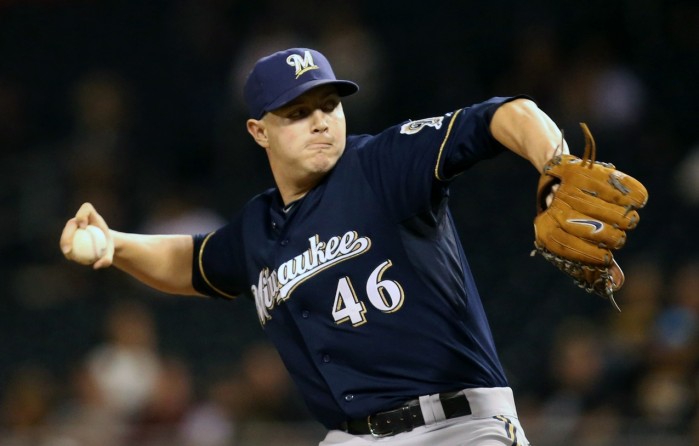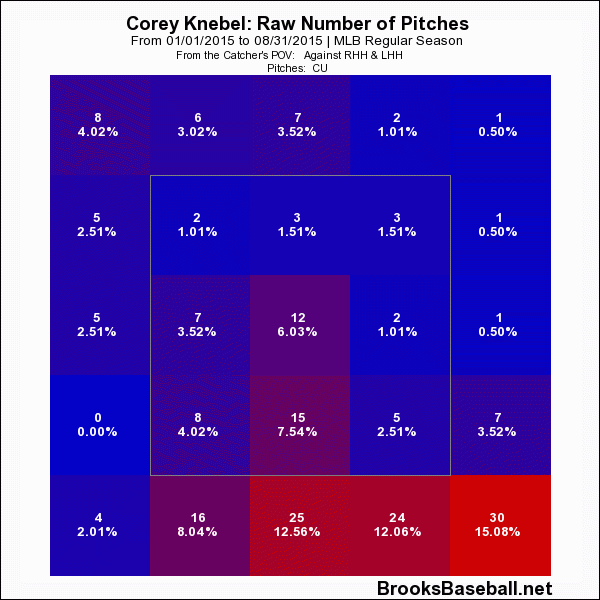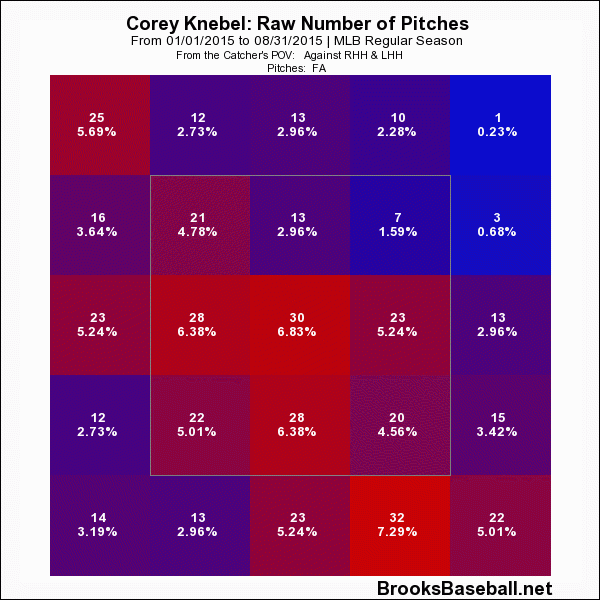Back in August, I took an in-depth look at Corey Knebel’s inconsistent yet promising rookie campaign. Despite some bumps in the road (mostly early on), he’d impressed to that point, backing up his 3.52 ERA with a 26.9 percent strikeout rate and an 8.8 percent walk rate. From there, I assumed the remainder of the season would bring more of the same — Knebel would fan a good deal of batters, keep his free passes at a reasonable level, and allow a solid amount of runs.
That didn’t come to pass. Knebel’s next appearance after that article came on September 1st, when he struck out three of the four batters he faced against the Pirates (and, admittedly, allowing a home run to the other). The clout he displayed there would last for the rest of September; over that span, Knebel punched out 30.6 percent of the batters he faced, while walking 6.1 percent. In both regards, he improved significantly from before, which helped him to post an ERA of 2.25 in that span.
So how did Knebel accomplish that? As his PITCHf/x plate discipline breakdown illustrates, he changed his entire recipe in the season’s final month:
| Month(s) | O-Swing% | Z-Swing% | Swing% | Contact% | Zone% |
|---|---|---|---|---|---|
| April-August | 29.0% | 65.7% | 46.5% | 77.1% | 47.8% |
| September | 26.9% | 62.8% | 47.2% | 83.5% | 56.7% |
The most important shift here lies in the last column, which shows that Knebel pounded the zone a lot more. Despite a rise in contact rate — which caused his swinging-strike rate, per Baseball-Reference, to drop from 10.7 percent to 7.6 percent — he managed to pump his strikeouts up, because he caught hitters looking so often. The decrease in zone swings, coupled with more pitches in the zone, allowed his called strike rate to increase from 18.5 percent to 21.7 percent. And, obviously, more strikes came along too, which helped him cut down on walks.
Knebel’s a two-pitch pitcher, owning solely a four-seam fastball and a curveball. Both of them went for strikes more often as 2015 progressed — the former’s strike rate jumped from 69.5 percent to 74.0 percent, and the latter’s spiked to 61.4 percent from 57.2 percent. The curveball, meanwhile, nearly doubled its called strike rate, going from 11.6 percent to 21.1 percent (the four-seamer stayed constant at about 22 percent). So Knebel’s curveball caught more hitters looking, and Knebel’s curveball and four-seamer each had fewer strikes.
Interestingly, Knebel’s late-year pitch usage didn’t budge at all — the four-seam fastball and the curveball still occupied about 68 and 31 percent, respectively of his arsenal. And neither of them notably evolved in terms of velocity or movement. The change, then, comes from location.
In the piece on Knebel cited above, I brought up his tendency to throw the curveball in the dirt. That resulted in a fair amount of whiffs — and a surprisingly decent amount of looks, typically on pitches further above the ground — but it hurt him when he didn’t receive the calls. Perhaps adjusting to that, he began to creep back up in the zone with the curveball, to a part more inside:
For the year as a whole, hitters generally laid off those pitches. By placing the curveball there more often, Knebel notched a lot more called strikes, in addition to more strikes overall. This tendency has backfired occasionally — just ask Andrew McCutchen — but overall it seems to have served Knebel well.
Knebel’s four-seamer alterations stand out to an even greater extent. As I observed in the aforementioned article, he struggled to locate the pitch in the early going, before regaining his command later and focusing it lower in the zone. So of course he’d do the exact opposite after my writing:
That approach had more mixed results. High heaters didn’t net many called strikes for Knebel in 2015, meaning even though Knebel threw the ball over the plate, his looking strike rate stayed about the same. However, batters did swing and miss at those the most often; it’s thus odd that his swinging strike rate fell in the season’s last month. Maybe this strategy will yield better results in 2016 — it already helped him accumulate a ton of strikes, so now he just needs to convert those to the useful kind.
The sample size here is obviously infinitesimal — Knebel compiled a mere 12.0 innings in September. In terms of pitches, though, this has a bit more legitimacy, since he threw 184 in that period. We still shouldn’t draw any concrete conclusions from this exercise; nevertheless, it intrigues me to note the way that Knebel improved in the later part of this campaign. If he can sustain this September performance over a full season, setting batters down on strikes and limiting bases on balls, he’ll realize his potential as a top-notch reliever.


